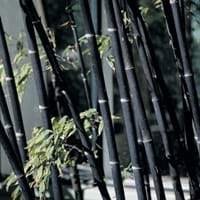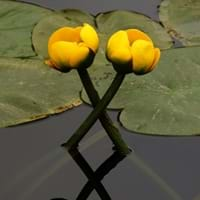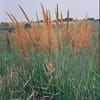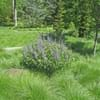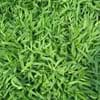Life Span
Annual and Perennial
Perennial
Origin
China
North America
Types
Timor Black Bamboo, Javanese Black Bamboo, Black Asper Bamboo
not available
Number of Varieties
Not Available
Habitat
Not marine, Terrícola
canals, Lakes, marshes, Ponds, sloughs, sluggish streams and rivers, springs
USDA Hardiness Zone
6-10
3-12
AHS Heat Zone
12 - 4
12-1
Sunset Zone
H1, H2, 5, 6, 7, 8, 9, 14, 15, 16, 17, 18, 19, 20, 21, 22, 23, 24
21,22
Habit
Thicket/Colonizing
Clump-Forming
Minimum Width
Not Available
Flower Color
Not Available
Yellow
Flower Color Modifier
Bicolor
Not Available
Fruit Color
Not Available
Non Fruiting Plant
Leaf Color in Spring
Lime Green
Green, Dark Green
Leaf Color in Summer
Light Green
Green, Dark Green
Leaf Color in Fall
Lime Green, Dark Green
Green, Dark Green
Leaf Color in Winter
Gray Green, Dark Green
Not Available
Leaf Shape
Long Linear
Heart-shaped
Plant Season
Spring, Summer, Fall, Winter
Spring, Summer, Fall
Sunlight
Full Sun, Partial Sun, Partial shade
Full Sun, Partial Sun
Growth Rate
Very Fast
Fast
Type of Soil
Clay, Loam, Sand
Clay, Loam, Sand
The pH of Soil
Acidic, Neutral, Alkaline
Acidic, Neutral, Alkaline
Soil Drainage
Average
Poorly Drained
Bloom Time
Not Available
Summer, Late Summer
Tolerances
Not Available
Wet Site
Where to Plant?
Container, Ground
In Water
How to Plant?
Grafting, Seedlings, Stem Planting
Seedlings
Plant Maintenance
Medium
Medium
Watering Requirements
Average Water Needs, Water Deeply, Water occasionally
Plant grows in water
In Summer
Lots of watering
Aquatic Plant
In Spring
Moderate
Aquatic Plant
In Winter
Average Water
Aquatic Plant
Soil pH
Acidic, Neutral, Alkaline
Acidic, Neutral, Alkaline
Soil Type
Clay, Loam, Sand
Clay, Loam, Sand
Soil Drainage Capacity
Average
Poorly Drained
Sun Exposure
Full Sun, Partial Sun, Partial shade
Full Sun, Partial Sun
Pruning
Cut or pinch the stems, Pinch Tips, Remove damaged leaves, Remove dead branches, Remove dead leaves, Remove dead or diseased plant parts, Remove deadheads
No pruning needed
Fertilizers
Nitrogen, Phosphorous
Not Available
Pests and Diseases
Red blotch
Aphids, Beetles, China Mark Moth, Leaf Rollers, Leeches, Lily Leaf Spot, Mosquito, Muck Midge, Ostracods, Snails, Spider mites, Tadpoles, Whiteflies
Plant Tolerance
Drought
Wet Site
Flower Petal Number
Single
Single
Foliage Texture
Fine
Coarse
Foliage Sheen
Matte
Glossy
Attracts
Mites
Not Available
Allergy
Dermatitis, Rash
Not Available
Aesthetic Uses
Showy Purposes
Showy Purposes
Beauty Benefits
Not Available
Not Available
Edible Uses
Insignificant
Yes
Environmental Uses
Air purification
Ethnobotanic, Wildlife
Medicinal Uses
Antiemetic, Antitussive, Astringent, Depurative, Diuretic, Expectorant, Febrifuge, Sedative, Styptic
Anaphrodisiac, Anodyne, Antiscrophulatic, Antispasmodic, Astringent, Cardiotonic, Demulcent, Hypotensive, Sedative, Vasoconstrictor
Part of Plant Used
Stem
Flowers, Root
Other Uses
Basketary, Showy Purposes, Used for woodware, Used in Furniture
Used As Food, Used as Ornamental plant
Used As Indoor Plant
Yes
No
Used As Outdoor Plant
Yes
Yes
Garden Design
Container, Feature Plant, Screening / Wind Break, Tropical
Water Gardens
Botanical Name
PHYLLOSTACHYS nigra
NUPHAR lutea
Common Name
Black Bamboo, Running Bamboo
Common Spatterdock, Yellow Pond Lily
In Hindi
काला बांस
पीला तालाब लिली
In German
schwarzer Bambus
Gelbe Teichrose
In French
bambou noir
Jaune nénuphar
In Spanish
negro de bambú
Lirio amarillo estanque
In Greek
μαύρο μπαμπού
Κίτρινο λίμνη κρίνος
In Portuguese
Black Bamboo
Lagoa do lírio amarelo
In Polish
Czarny Bambus
Żółty staw lilii
In Latin
niger Bamboo
Yellow piscinam lilium
Phylum
Magnoliophyta
Magnoliophyta
Class
Liliopsida
Liliopsida
Order
Cyperales
Nymphaeales
Family
Poaceae
Nymphaeaceae
Genus
Phyllostachys Siebold & Zucc
Nuphar
Clade
Angiosperms, Commelinids, Monocots
Angiosperms
Tribe
Bambuseae
Not Available
Subfamily
Bambusoideae
Not Available
Number of Species
Not Available
Importance of Black Bamboo and Yellow Pond Lily
Want to have the most appropriate plant for your garden? You might want to know the importance of Black Bamboo and Yellow Pond Lily. Basically, these two plants vary in many aspects. Compare Black Bamboo and Yellow Pond Lily as they differ in many characteristics such as their life, care, benefits, facts, etc. Every gardener must at least have the slightest clue about the plants he wants to plant in his garden. Compare their benefits, which differ in many ways like facts and uses. The medicinal use of Black Bamboo is Antiemetic, Antitussive, Astringent, Depurative, Diuretic, Expectorant, Febrifuge, Sedative and Styptic whereas of Yellow Pond Lily is Anaphrodisiac, Anodyne, Antiscrophulatic, Antispasmodic, Astringent, Cardiotonic, Demulcent, Hypotensive, Sedative and Vasoconstrictor. Black Bamboo has beauty benefits as follows: Not Available while Yellow Pond Lily has beauty benefits as follows: Not Available.
Compare Facts of Black Bamboo vs Yellow Pond Lily
How to choose the best garden plant for your garden depending upon its facts? Here garden plant comparison will help you to solve this query. Compare the facts of Black Bamboo vs Yellow Pond Lily and know which one to choose. As garden plants have benefits and other uses, allergy is also a major drawback of plants for some people. Allergic reactions of Black Bamboo are Dermatitis and Rash whereas of Yellow Pond Lily have Not Available respectively. Having a fruit bearing plant in your garden can be a plus point of your garden. Black Bamboo has no showy fruits and Yellow Pond Lily has no showy fruits. Also Black Bamboo is not flowering and Yellow Pond Lily is not flowering . You can compare Black Bamboo and Yellow Pond Lily facts and facts of other plants too.
